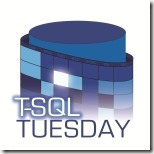In case you don’t follow me on LinkedIn or Twitter, your humble host joined the smart folks at Straight Path Solutions in March. This is a talented group of SQL Server consultants founded by Mike Walsh and includes several former Microsoft MVPs, and I’m incredibly honored to be part of their team.
Especially since I didn’t have much experience as a consultant.
Maybe you don’t either, which is why I wrote this post. If you ever wanted to know how consulting is different than a typical job as a fulltime DBA, I’ve assembled this brief retrospective of things I’ve learned so far.
Let’s get to it then.
Continue reading

